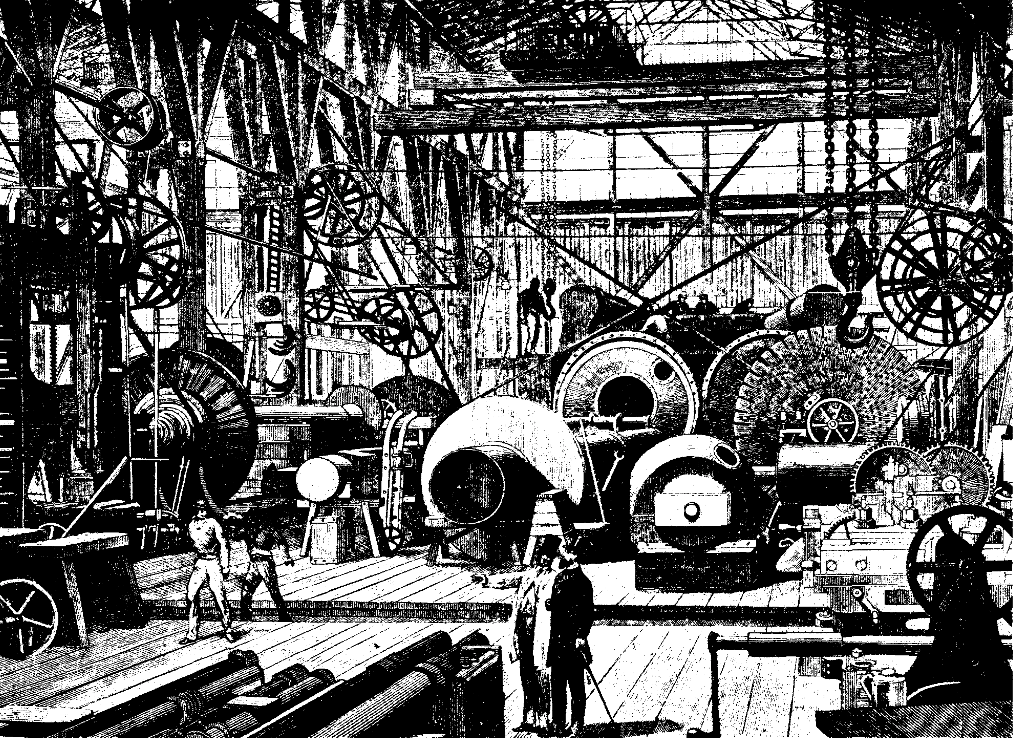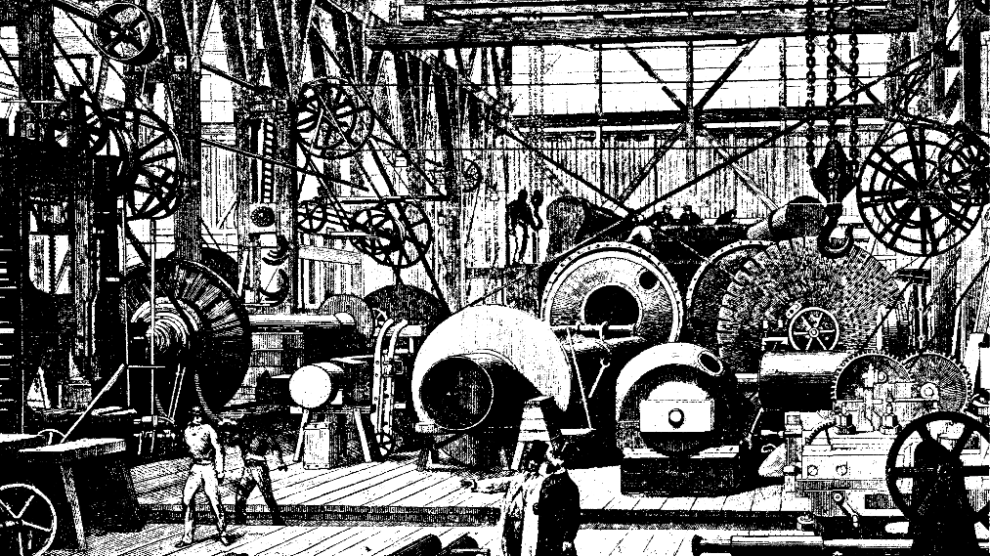September 15, 2021
Socialize the Lab
By Calvin Wu
Leia a tradução desse texto em português.

This article is dedicated to academic organizers who build communities for other scientists to thrive in. Deeply empathetic of others’ well-being, they regard very little of their own.
—
The word laboratory evokes an image of modernity—one that bears witness to human ingenuity and diligence in bending nature and making life-changing discoveries. Yet, this image is also shrouded in mystery. Despite the fact that knowledge produced in the lab has resulted in far-reaching historical consequences, much remains unexplored about how labs and society shape each other.
Such a disconnect between the lab and society is bewildering. Even with increased fascination of the lab as a sociological curiosity beginning in the 1970s (which then abruptly ended in the 1990s) and the recognition of the lab as a prominent site of knowledge and power, we still lack a coherent historical account of the lab.1
This article will thus offer a critical history of the lab by elucidating the dialectics between the development of lab science and the larger socioeconomic changes, namely capitalism, driven by and driving the lab’s formation and evolution. This material analysis will reveal why lab historiography had not been forthcoming. Finally, this article will use this critical insight to examine the inner workings of today’s labs from the perspective of workers within and list concrete actions to take the future of labs and of society into the hands of those whose labor produces knowledge and wealth.
When Alchemy Ruled the World
The history of modern science, following the hegemonic Western narrative, began with Copernicus.2 Accordingly, the first lab was likely the brainchild of Copernicus’s successor Tycho Brahe in the late sixteenth century. A nobleman, Brahe built his lab—more precisely, Brahe’s many servants built the lab—on an island estate off the coast of Denmark, where a three-story castle contained an astronomy observatory on the top floor, a drawing room in the middle, and an alchemy lab at the bottom.3 If astronomy provided the technical know-how for the Danish Crown to plunder overseas colonies in Iceland and Faroe Islands, alchemy held the promise for directly generating bearers of wealth (gold and silver) through empirical practices.4
Unsurprisingly, metal transmutation never worked, but alchemy set the foundation for entire industries based upon material synthesis: acids, dye, perfume, gunpowder, metallurgy.5 Alchemy was legitimized into the science of chemistry by the seventeenth century. Contrary to popular narrative, it was not Robert Boyle’s law of ideal gas or his inventions of experimental contraptions that gave birth to chemistry, but the rapid growth of artisanal manufacturing6, the commodity market, and increased reliance on productive labor that necessitated displacing the occult with the scientific.7
Here, we start to see a recurring pattern: the development of science is intricately linked to its historical backdrop. Colonial expansion in the age of discovery could not have existed without astronomy and maritime technology, and vice versa; thus, the origin of modern labs can also be traced to the grand socioeconomic transformation to capitalism.
From Workshops to Universities
Throughout the eighteenth century, labs grew in size and primarily served as the site of commercial chemical production.8 In Britain, the booming textile industry—itself a result of colonial conquest (i.e. cheap cotton planted by slave labor)—depended on efficient chemical bleaching and cleaning in the production process.9 Labs in this era also became dispersed, away from private dwelling of aristocrats, due to the simple reason that chemistry has always been occupationally hazardous.10 Chemistry became a quantitative science, as Antoine Lavoisier spearheaded careful measurement and record keeping in chemical synthesis. Lavoisier championed standardization (e.g. the metric system) for a reason: he acted on behalf of wealthy merchants—whose investments spanning different manufacturing sectors gave rise to the need for precision and coordination—and himself as part owner of a large gunpowder business, which would later become DuPont.
Political realignment then followed this economic shift. The French revolution ushered the bourgeoisie into center stage of history, whose class interest based on private property, competition, and free labor market directly confronted the prior mode of artisanal manufacturing.11 The conflict between artisans and bourgeoisie was resolved through technological advances during the industrial revolution of the nineteenth century. Chemical manufacturing labs were gradually replaced by machineries and thus dissociated from experimentation, technical knowledge production and dissemination.12 Where, then, did the lab, where theoretical and practical knowledge were refined and taught, go?
The development of science is intricately linked to its historical backdrop.
The answer, again, lies in the historical transformation to capitalism and, in particular, the uneven industrial development among nation-states. In the early nineteenth century, Germany had been a loose federation of multiple small kingdoms. This disadvantaged the German manufacturers as state infrastructures often could not meet their demands. To compensate for political disunity, the civil society turned towards other centralized institutions: professional societies, churches, and universities.13
The first university lab was born in Geissen in 1824, under the directorship of Justus von Liebig. Liebig’s initial vision was to turn his lab into a large-scale organic chemical and pharmaceutical manufacturing enterprise that sought to monopolize production. Unsurprisingly, this was rapidly and uniformly shot down by the German bourgeoisie. Nonetheless, Liebig was the first to set the academic tradition for a “teaching lab,” where lab benches took the central spots of the room.14
In the span of half a century, under the chancellorship of Otto von Bismarck, a unified Germany invested heavily in state enterprises (including universities) to accelerate capital accumulation. As the German scientific establishment gained prominence in the late nineteenth century—in tandem with its rapid industrialization—Britain and France saw the merit of the centralized German model and increased their own investment in university labs. Consequently, labs in other scientific fields also began to flourish in universities. In Germany, anatomy/physiology labs received the most funding, followed by chemistry and physics. The rise of physiology labs paralleled Germany’s increased focus on public health, while the gap between chemistry and physics labs was not caught up until the age of electromagnetism.15
Petroleum, Wars, and Keynes
Institutionalization of labs was complete at the turn of the twentieth century. As parts of the state, labs also acquired two nascent functions. The first was industrial quality control that arose in reaction to Frederick Taylor’s “scientific” factory management. While Taylorism and widespread application of heavy machinery increased productivity via intensification of labor, it drastically reduced the quality of products, as workers could no longer perform audits internally.16 The decline in quality was especially fraught in food and chemicals, which not only endangered public health but also rendered these sectors uncompetitive in the global market. In the same year Upton Sinclair’s The Jungle (1905) was published, which brought industrial plight to public attention, government labs were established to regulate industrial production through the US Department of Agriculture and the Food and Drug Administration.
Similarly, rapid industrialization forced mass migration of workers from the countryside to cities and produced appalling social inequality. Crime, both petty and organized, became a major issue of social concern in the early twentieth century. Edmund Locard, known as the French Sherlock Holmes, founded the first forensic lab in Lyon in 1910. His idea was imported to the United States in 1923 by the Los Angeles Police Department. Thus, lab science also played a key role in solidifying the state’s monopoly on violence.
In the first quarter of the twentieth century, labs were still dominated by chemistry research, as innovations in chemical knowledge were crucial for robber barons to secure their wealth in an age of petroleum.17 Private interests were realized in corporate and university labs with prominent scientists revolving between them.18 Two University of Michigan chemistry professors spearheaded the entire research and development program for Dow Chemical and accumulated over 300 patents to establish Dow’s monopoly in the process. The same porosity between public and private labs was replicated in Germany, when Carl Bosch, later a Nobel Laureate, founded IG Farben.19
Under the purview of capitalist states that compete for colonies to gain resources, labor, and markets in a limitless pursuit for profit, both Dow and IG Farben, on each side of World War I, created mass misery in the form of chemical weapons like poison gas. The complicity of labs in warfare only intensified as fascism decidedly defeated socialist revolutions across the Western world in the 1930s and 1940s. During this evermore deranged era, even a resemblance of an anti-fascist struggle—e.g. the Manhattan Project—signaled the destruction of humanity.20
The lab’s expansion and accumulation of knowledge-power on the one hand, always corresponds to the accumulation of misery on the other.
Labs in the post-war period retained their Keynesian-Fordist character—that is, highly centralized, driven by state initiatives based on macroeconomic demands—to absorb surplus capital created during rapid economic growth.21 The American military and financial hegemony propelled by technological advancement in the labs, in turn, consecrated the labs as a source of national pride and a rallying point against the “threat of communism.” This, however, created a split in the post-war American mentality. While highly celebratory of the achievement of modern science linked to nationalism and an increased standard of living, Americans were also extremely fearful of technologies being deployed by an omnipresent “enemy.”22 Moreover, within social life, scientists were also a rare breed; in the 1950s, less than eight thousand doctorates were awarded by American universities each year.23 A majority of scientists came from upper middle class backgrounds—a secluded bunch who enjoyed high social status and job security through the tenure system. The combination of the Cold War mentality and the distinct class character of scientists effectively draped a veil over the labs.
To demystify such an inaccessible space that generates indecipherable knowledge with far-reaching social, political, and economic consequences, sociologists and anthropologists in the 1970s fervently looked to study the lab.24 This quest was exemplified by the publication of Bruno Latour’s Laboratory Life (1979). Latour and others employed mainly ethnographic approaches to discover the “nature of intellectual activity” and understand the positionality of the lab in society.25 However, their ordaining the labs “moving the world with the lever” failed to consider larger economic contexts under which labs have been created, shaped, and reproduced throughout history.26 An uncritical approach to lab historiography therefore stood helpless in understanding the lab as science and society changed rapidly during the neoliberal turn of the world economy. Lab study disappeared after two decades of being awed by the very mystery that they failed to unveil.
Neoliberal Labs and Proletarianized Science
The neoliberal turn in the world economy spanned almost two decades beginning in 1971 and became fully entrenched by the late 1980s.27 Labs during this economic paradigm shift enjoyed unprecedented expansion. Financial deregulation allowed private enterprises to speculate and actualize their profiteering obsession through technology. This, in turn, necessitated the formation of rigid intellectual property rights regimes and free movement of highly skilled labor across national boundaries. While marketization was in full force, the lab’s core economic engine was the state. First, existing lab infrastructure required continued government funding for uninterrupted knowledge production. Second, Keynesianism remained the dominant mode of production and circulation of military technologies. Some labs metamorphosed during neoliberalization, such as the transformation of military labs into today’s high tech industry of Silicon Valley.28 Other labs—especially in biomedicine—relied on increased federal research and development spending to produce scientific knowledge, which would later be commodified.29
But as a capitalist rule of thumb, the lab’s expansion and accumulation of knowledge-power—or more specifically, immaterial intellectual properties turned into money capital—on the one hand, always corresponds to the accumulation of misery on the other. The deep social impact in this era will not be discussed here; instead, the subsequent section will examine the oft-neglected aspect of how the neoliberal turn proletarianized science and the lab.
Proletarianization as a process is exemplified by the nineteenth century class conflict between the artisans and bourgeoisie. Prior to the industrial revolution, artisans protected and monopolized their various skills passed down from masters to journeymen through guilds and ritualized social reproduction.30 However, with technological change and the advent of machinery, artisans were deprived of their means of production. Forced to sell their labor-power to survive, many became propertyless workers.
As the historiography showed, modern science had its roots in the artisan tradition; labs were workshops, and scientists were craftsmen with skill monopolies. Proletarianization had always been an undercurrent since the institutionalization and privatization of labs, but was thus far barred from destroying this “scientist class” by a century of state intervention. Yet, under capitalism, artisanship must eventually be swept away; under capitalists’ speculative eyes, workshops or labs are always potential factories.
In the neoliberal era, labs now bear more and more resemblance to industrial factories. Is it any wonder why lab sociology ceased to exist? Only two types of people care about the inner workings of factories: on one side, the owners and managers who operate the factory for the sole purpose of profit, and on the other, we exploited workers who seek to liberate ourselves from the factory system.
Factories, as sites of production, are by no means antithetical to an egalitarian vision of society, as they may be needed to provide for human subsistence. It is the capitalist mode of production—the social relationship between owners, workers and their labor—that endangers the “free development” of humanity.31
In the lab, the systemic and alienating force of capital that dictates labor-power, vis-à-vis the intellectual and creative freedom of scientists, becomes all the more contradictory. The division of labor distills academic disciplines into hundreds of small areas of focus; cross-pollination and interaction remain rare even as the disciplines grow. New research hardwares and softwares are frequently upgraded. Yet, the aim is not to improve scientific rigor, but rather, to speed up result generation for subsequent commodification, to eliminate highly trained personnels with labor-saving gadgets and low-cost entry-level technicians, and to accumulate money power through technological monopoly.
Without situating science and lab practices within the historical process of capitalism, the disconnect between science and society cannot be resolved, and experts behind the veil will continue to wonder why the general population “do not trust scientific authorities.”
As practiced currently, can scientific knowledge be objective under a coercive system driven solely by profit? Should there be any mystery that the idealized internal mechanisms of science, such as quantification, falsification, and peer-review, fail so often and often so spectacularly?32 Without situating science and lab practices within the historical process of capitalism, the disconnect between science and society cannot be resolved, and experts behind the veil will continue to wonder why the general population “do not trust scientific authorities.”33
And what becomes of the proletarian scientists? For one, scientists no longer enjoy the job security that differentiated them from other professions in the past. In 1970, more than half of the academic scientists had tenure; today, it is less than one eighth.34 With the ever-expanding private sector, university labs became the sites for job training.35 In 1980, each “master craftsman” trained an average of two “journeymen, PhD” in a biomedical lab; today, the number of journeymen has risen to more than six.36 The labs also centralized capital accumulation; to continue using examples from biomedicine, its largest funding agency, the National Institutes of Health, heavily skewed grants towards elite institutions and already well-funded labs.37 This means even if a journeyman were to become a master, chances are that they would be unable to compete with the entrenched academic oligopoly.
Now alienated from their means of production, scientists must sell their labor-power as proletarians—if they are lucky enough for their “merit” to be considered—to work for Novo Nordisk, Pfizer, or AstraZeneca. The proletarian scientists must endure prolonged training, deteriorating working conditions, and student debt.38 They are pitted against each other for survival in the globalized labor market—one decorated in the narrative of freedom and equal opportunity. They are uprooted from all over the world, struggling against the mental and physical toll of racism and sexism from lab to lab on a daily basis.39
The Place of Labor, Reimagined
It is again time to contemplate the meaning of lab—laboratory, the place of labor, where scientific knowledge is produced through the scientist’s work—one that is intimately about understanding, interacting, and transforming nature to fulfill human needs.
Capitalism gave birth to the modern lab, transforming it from a space of aristocratic amusement to an indispensable element of class power through institutionalization, mystification, commodification, and above all, class conflict. As we stand today, the material wealth collectively consummated in the lab is expropriated into the hands of the ruling elite. The question now must be: how do we reclaim the lab?
It is always difficult to plot the path towards an indeterminate future. Few things are certain: we must see ourselves no longer as listless white coats, but among the masses of people. We have served to perpetuate class oppression through producing knowledge and technology for the bourgeoisie; we are artisans being dispossessed in a changing global economic order; we have become proletarians, with our fate connected to all workers of the world; and we, along with the world’s toiling masses, are agents of social change who alone can emancipate science from the stranglehold of capital, both in and out of the lab. The old protocol, “educate, agitate, organize,” still applies.40
This critical analysis of the lab’s history and present leads to one logical future—socializing the lab, our labor, and the means of knowledge production.
To educate. Scientists often think about ourselves as educators of the public, but in fact, we are the ones who desperately require greater education about the social, political, and economic contexts in which our work unfolds. Scientists must congregate with community organizations and radical social movements to jointly define what constitutes human needs and of which research should be prioritized. We should resist the siloing of the natural from the social sciences; facilitating training, communication, and collaboration to confront the historical complicity of specific academic disciplines in class oppression. Meanwhile, we should create alternative sites of knowledge production beyond institutionalized labs—science is not all about complex machinery; much can be done in a decentralized manner by the infinitely creative minds of the people themselves.
To agitate. Most scientists still enjoy relatively more material wealth and freedom of thought than other categories of workers. The lab’s insularity, as well as scientists’ autonomy within it, can transform the lab into a space for revolutionary scientists to engage in disruption and test the limits of established systems. Alongside colleagues and community partners, we can develop one another’s class consciousness and percolate bourgeois ideology out of our world view by investing in our own political education and training as activist scientists. We can use our analytical methods to fuel movements and agitate the public for further organizing. This turns the lab on its head, from a site of job training and capital accumulation into a radicalization pipeline.
To organize. Before any of the above transformations can take place, we must first capture decision-making power, whether through unionization or establishing research cooperatives. Together, scientists and other lab workers, including all support staff, should democratically participate in the lab’s everyday operations: what projects to which we devote our labor-power and how to delegate and compensate work. Moreover, we must once again recognize the simple facts that the lab does not exist outside of society and that science happens outside of the lab as in it. The social implication of knowledge generated in the lab necessarily situates us in social movements; for instance, in studying the detrimental environmental and health effects of uranium mining, scientists must participate in denuclearization campaigns.
This critical analysis of the lab’s history and present leads to one logical future—socializing the lab, our labor, and the means of knowledge production. While the projects and struggles outlined above may seem daunting, changing society is nothing more than a collaborative scientific project. The tools for building a humane future are already present among us in the structures of open science, cooperatives, unions, and movement spaces. This is the future we want, and this is the future we must build.
Acknowledgements
I thank T.A. Tran and Pedro Nardelli for their critical commentaries of my critical analysis, and the SftP editorial team for their fruitful labor. The author declares all conflicts of interest: I am deeply biased toward the historical agency of the people.
—
Calvin Wu is a member of SftP Ann Arbor, and publisher of Science for the People.
Notes
- Robert E. Kohler, “Lab History: Reflections,” Isis; an International Review Devoted to the History of Science and Its Cultural Influences 99, no. 4 (December 1, 2008): 761–68, https://doi.org/10.1086/595769; Peter J. T. Morris, The Matter Factory: A History of the Chemistry Laboratory (Reaktion Books, 2015).
- Thomas S. Kuhn, The Copernican Revolution: Planetary Astronomy in the Development of Western Thought (Harvard University Press, 1957).
- “Tycho Brahe, Laboratory Design, and the Aim of Science: Reading Plans in Context,” Isis; an International Review Devoted to the History of Science and Its Cultural Influences 84, no. 2 (June 1, 1993): 211–30, https://www.jstor.org/stable/236232.
- David Berreby, “How Alchemy Led to the Modern Economy,” Big Think, March 14, 2012, https://bigthink.com/Mind-Matters/how-alchemy-led-to-the-modern-economy.
- Scientists today often mock the great Enlightenment theoretician Isaac Newton for his obsession with alchemy as King’s Warden of the Mint, but they fail to consider that Newton’s authoritative role was to safeguard alchemy’s real economic impact, despite its archaic and secretive façades. The secretive nature of alchemy furthermore solidified the power of aristocracy using technology.
- Manufacturing here refers to small-scale commodity production prior to the industrial revolution, distinguished from machine and factory production of the subsequent era.
- Ursula Klein and E. C. Spary, Materials and Expertise in Early Modern Europe: Between Market and Laboratory (University of Chicago Press, 2010).
- C. M. Jackson, “The Laboratory,” A Companion to the History of Science, 2016, https://doi.org/10.1002/9781118620762.ch21.
- Klaus H. Wolff, “Textile Bleaching and the Birth of the Chemical Industry,” Business History Review 48, no. 2 (1974): 143–63, https://doi.org/10.2307/3112839.
- Morris, The Matter Factory.
- I follow the Marxian definition of the bourgeoisie. Translated from French as “town dwellers,” this new class of merchants, landowners, lawyers, and bankers constituted the middle of 19th century French society, with aristocrats on top and propertyless workers on the bottom. In today’s society, the bourgeoisie is the ruling class: there is no longer anything middle about it.
- Robert Fox and Anna Guagnini, “Laboratories, Workshops, and Sites. Concepts and Practices of Research in Industrial Europe, 1800-1914 (Concluded),” Historical Studies in the Physical and Biological Sciences: HSPS / Office of History of Science and Technology, University of California, Berkeley 29, no. 2 (1999): 191–294, https://doi.org/10.2307/27757811.
- Jurgen Kocka, “Capitalism and Bureaucracy in German Industrialization before 1914,” The Economic History Review 34, no. 3 (1981): 453–68, https://www.jstor.org/stable/2595883.
- F. L. Holmes, “The Complementarity of Teaching and Research in Liebig’s Laboratory,” Osiris 5 (1989): 121–64, https://doi.org/10.1086/368685.
- To ensure Germany’s competitiveness and industrial prowess, Bismarck exercised heavy state intervention in the economy. A prototype of modern universal welfare programs not only quelled worker’s discontent, but also provided a healthy and educated labor supply for the German industrialists.
- J. F. Buckman, “Quality Is Not Optional,” Transfusion, October 1994, https://doi.org/10.1046/j.1537-2995.1994.341095026967.x.
- I focus here on chemistry labs because of the dominance of chemical industries. Labs of other scientific disciplines such as physics and physiology did not yet produce commodifiable knowledge at the time.
- Charles F. Chandler, prominent chemist at Columbia University and the founder of the American Chemical Society, was a highly paid consultant for Standard Oil.
- IG Farben was charged with war crime at Nuremberg in 1947 for manufacturing Zyklon B used in the gas chamber during the Holocaust, as well as employing death camp slave labor. Thirteen executives were convicted with prison sentences; however, none served more than three years as all were released by 1951. These same capitalists took charge of BASF and Bayer, remnants of the dissolved IG Farben, in rebuilding West Germany.
- Here I use the term “anti-fascist” referring to the common political sentiment among scientists who participated in the Manhattan Project. Many of them realized and believed that the world was in fact entering the atomic era, and thus devoted their labor to prevent overt fascist regimes from exploiting such knowledge. Yet, beyond the intention of defeating fascism, the development of the weapon of mass destruction ultimately gave rise to the tragedy of the American empire.
- The economic era of 1945–1973 is represented by the theory and practice of two prominent figures: economist John Maynard Keynes and industrialist Henry Ford. Keynes provided a theoretical framework for understanding the crisis following the 1929 Great Depression as characterized by insufficient demand/overproduction, thus arguing for the role of the state to intervene in managing effective demand at the point of surplus consumption. Ford championed the creation of mass demand as a necessary component for mass production (of automobiles); as such, the Ford company not only raised worker’s wages but also invested heavily in social institutions to shape workers’ consumption habits as a way to close the loop of industrial production. In the context of the lab, Keynesian-Fordism shapes both the input (government funding) and output (research results serving state-driven initiatives). Keynesian labs also serve the function to absorb surplus capital in forming fixed capital and in advancing military technologies.
- The aura of secrecy surrounding science and technology was also exemplified by highly classified operations in national labs.
- The US population increased 2-fold from 1960 to 2000, while the number of doctorates increased 7-fold to 42,000 by 1999. See, Lori Thurgood, U.S. Doctorates in the 20th Century: Special Report (National Science Foundation, 2006).
- Bruno Latour and Steve Woolgar, Laboratory Life: The Construction of Scientific Facts (Princeton University Press, 2013); Harry Collins, Changing Order: Replication and Induction in Scientific Practice (University of Chicago Press, 1992); Graeme Gooday, “Placing or Replacing the Laboratory in the History of Science?,” Isis; an International Review Devoted to the History of Science and Its Cultural Influences 99, no. 4 (December 2008): 783–95, https://doi.org/10.1086/595772.
- Latour and Woolgar, Laboratory Life.
- Bruno Latour, “Give Me a Laboratory and I Will Raise the World,” Science Observed: Perspectives on the Social Study of Science, 1983, 141–70.
- In 1971, as a response to the declining rate of profit, the American ruling elites unilaterally terminated the Bretton-Woods system, which since the end of World War II had regulated effective demands across first world economies through planned investments. The US dollar’s shackle to gold and other currencies was unleashed, facilitating capital accumulation through rapid financialization. The second phase of neoliberalization spanned the entire 1980s, characterized by interest rate surges as countermeasures to the side-effect of inflation during the first phase. This resulted in massive unemployment, further weakening of labor unions, and the bondage of debt.
- Thomas Heinrich, “Cold War Armory: Military Contracting in Silicon Valley,” Enterprise & Society 3, no. 2 (2002): 247–84, https://doi.org/10.1093/es/3.2.247.
- Emily H. Jung et al., “Analysis: Large Pharma Companies Do Little New Drug Innovation – STAT,” December 10, 2019, https://www.statnews.com/2019/12/10/large-pharma-companies-provide-little-new-drug-development-innovation/.
- J. Ehmer, “Artisans and Guilds, History of,” International Encyclopedia of the Social & Behavioral Sciences, 2001, https://doi.org/10.1016/b0-08-043076-7/02706-6.
- “In place of the old bourgeois society, with its classes and class antagonisms, we shall have an association, in which the free development of each is the condition for the free development of all.” Karl Marx and Friedrich Engels, Manifesto of the Communist Party: The Communist Manifesto (Classic Books Publishing, 2009).
- Udo Schüklenk, “Retraction Watch,” Bioethics 26, no. 6 (July 2012): ii, https://doi.org/10.1111/j.1467-8519.2012.01986.x.
- Atul Gawande, “The Mistrust of Science,” The New Yorker, June 10, 2016, https://www.newyorker.com/news/news-desk/the-mistrust-of-science.
- National Science Board et al., “S&E Indicators 2016,” accessed April 12, 2021, https://www.nsf.gov/statistics/2016/nsb20161/.
- While physical labs run by private sectors, in terms of spaces and scientists directly employed conducting research, dwindled since the 1980s, the investment and capital flow increased via outsourcing of research activities to universities. This can be done either through direct funding from private enterprise to university labs via contracts that negotiate ownership of research products, or through private-public partnership to acquire lucrative federal funding, while retaining intellectual patent rights.
- Navid Ghaffarzadegan et al., “A Note on PhD Population Growth in Biomedical Sciences,” Systems Research and Behavioral Science 23, no. 3 (May 2015): 402–5, https://doi.org/10.1002/sres.2324.
- Wayne P. Wahls, “The NIH Must Reduce Disparities in Funding to Maximize Its Return on Investments from Taxpayers,” eLife 7 (March 23, 2018), https://doi.org/10.7554/eLife.34965.
- Chris Woolston, “PhDs: The Tortuous Truth,” Nature 575, no. 7782 (November 2019): 403–6; Jordan Weissmann, “Ph.D. Programs Have a Dirty Secret: Student Debt,” The Atlantic, January 16, 2014, https://www.theatlantic.com/business/archive/2014/01/phd-programs-have-a-dirty-secret-student-debt/283126/.
- Naomi Oreskes, “Racism and Sexism in Science Haven’t Disappeared,” Scientific American, October 1, 2020, https://www.scientificamerican.com/article/racism-and-sexism-in-science-havent-disappeared/.
- Social-democratic federation, Socialism Made Plain, the Social and Political Manifesto of the Democratic Federation, 1883.





